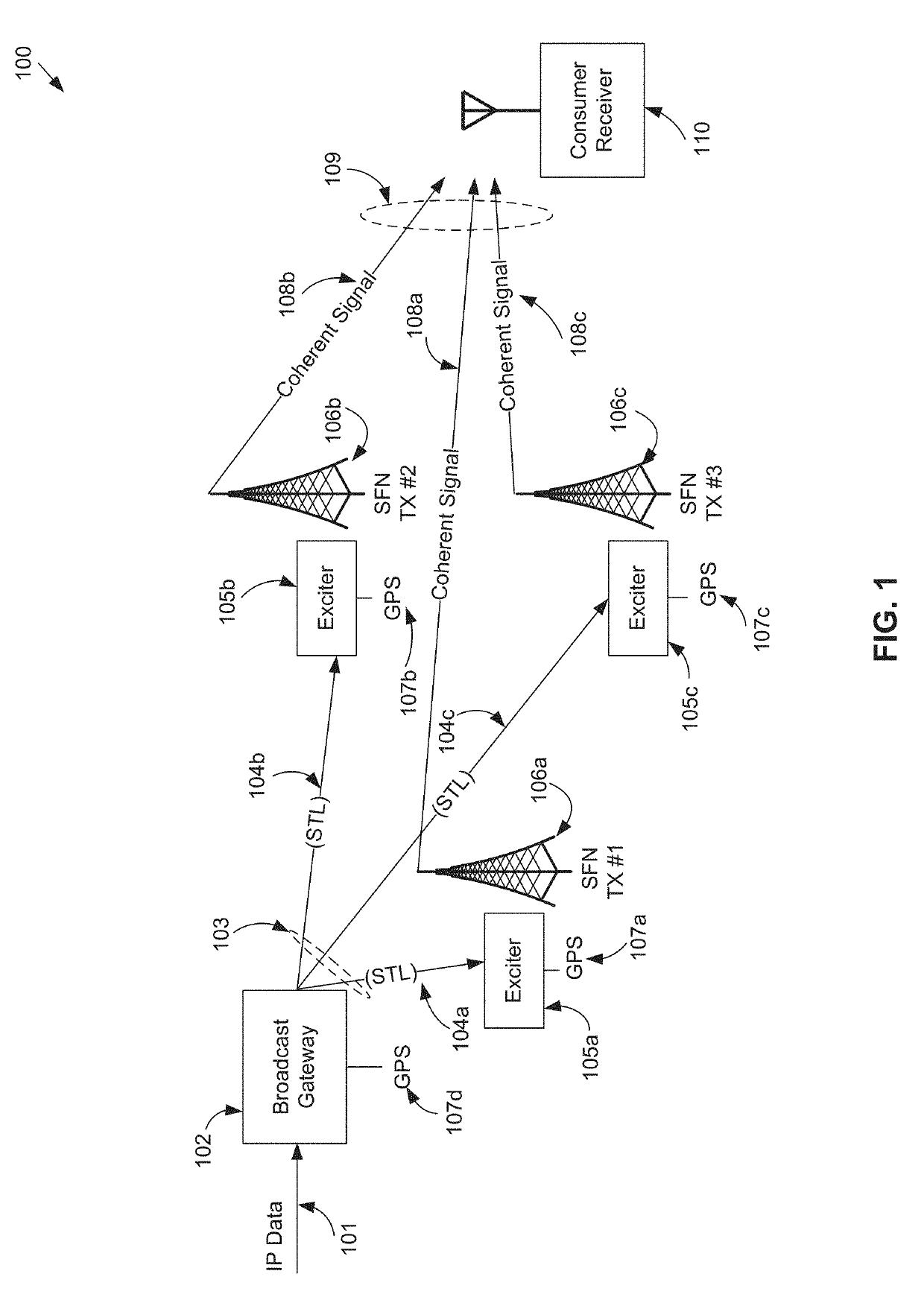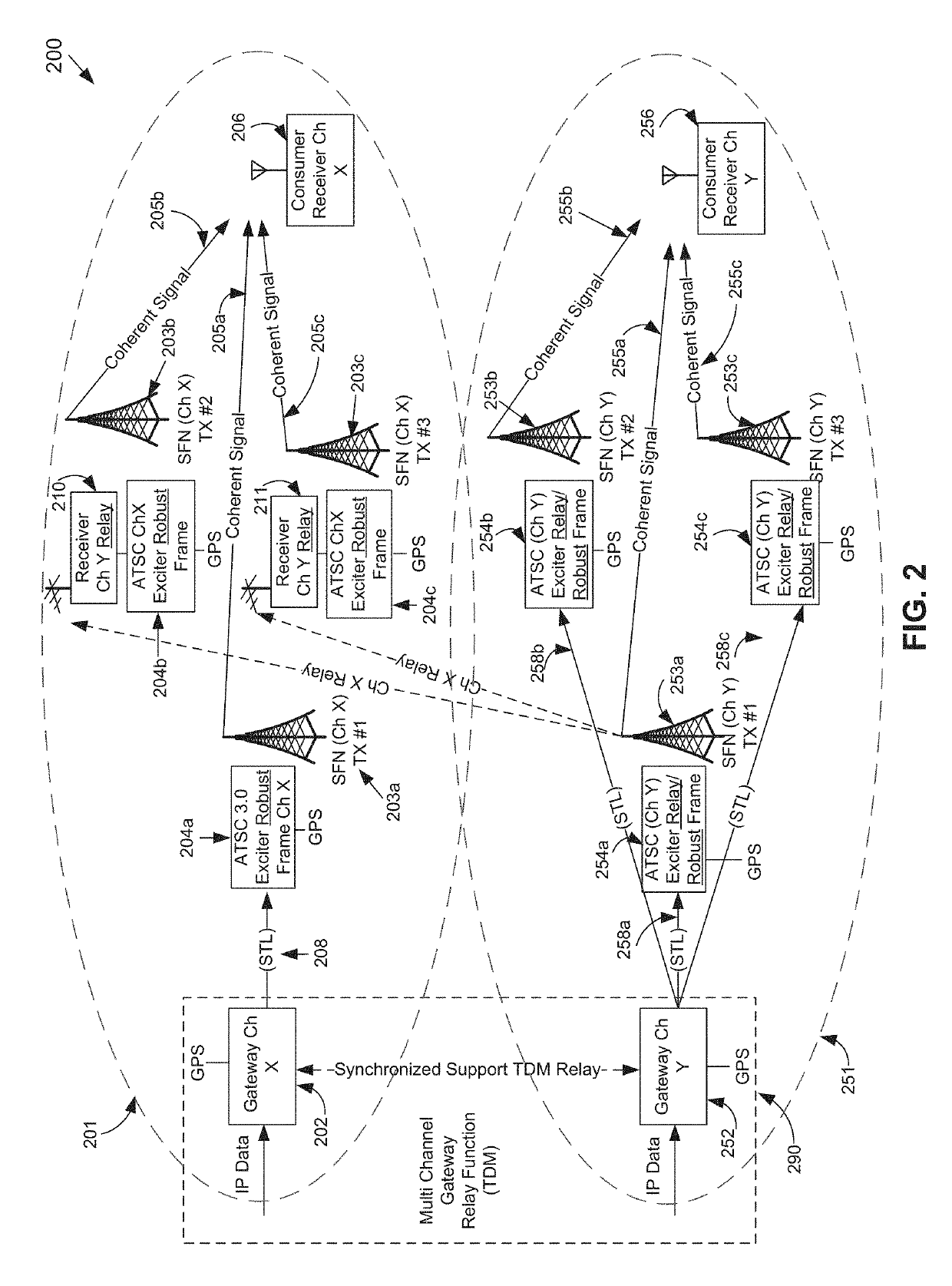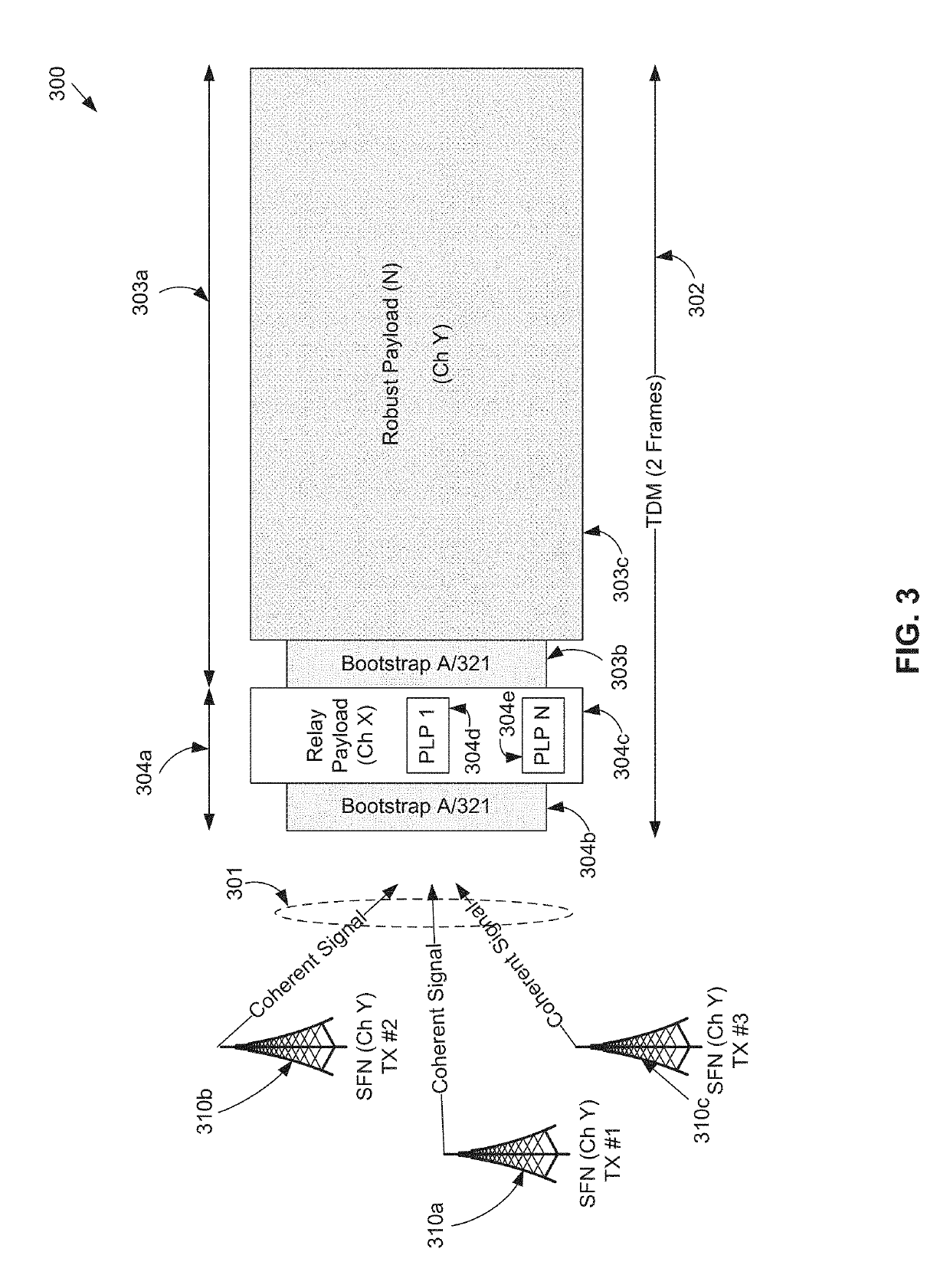Broadcast Relaying via Cooperative Multi-Channel Transmission
a multi-channel transmission and broadcast relay technology, applied in the field of communication systems, to achieve the effect of cost saving
- Summary
- Abstract
- Description
- Claims
- Application Information
AI Technical Summary
Benefits of technology
Problems solved by technology
Method used
Image
Examples
Embodiment Construction
[0038]It should be appreciated that the following acronyms and abbreviations may be used herein:
[0039]ATSC Advanced Television Systems Committee
[0040]AWGN Additive White Gaussian Noise
[0041]BICM Bit-Interleaved Coded Modulation
[0042]dB Decibels
[0043]FEC Forward Error Correction
[0044]FFT Fast Fourier Transform
[0045]GI Guard Interval
[0046]GPS Global Positioning System
[0047]LDM Layer Division Multiplexing
[0048]LDPC Low Density Parity Check
[0049]MHz MegaHertz
[0050]NFV Network Function Virtualization
[0051]OFDM Orthogonal Frequency Division Multiplexing
[0052]OTA Over-the-Air
[0053]PLP Physical Layer Pipe
[0054]QAM Quadrature Amplitude Modulation
[0055]QPSK Quadrature Phase Shift Keying
[0056]RF Radio Frequency
[0057]SDN Software-Defined Networking
[0058]SFN Single Frequency Network
[0059]SNR Signal-to-Noise Ratio
[0060]STL Studio-to-Transmitter Link
[0061]International Atomic Time
[0062]TDM Time Division Multiplexing
[0063]TX Transmitter
[0064]VNF Virtual Network Function
[0065]Broadcast Single-Freque...
PUM
 Login to View More
Login to View More Abstract
Description
Claims
Application Information
 Login to View More
Login to View More - R&D
- Intellectual Property
- Life Sciences
- Materials
- Tech Scout
- Unparalleled Data Quality
- Higher Quality Content
- 60% Fewer Hallucinations
Browse by: Latest US Patents, China's latest patents, Technical Efficacy Thesaurus, Application Domain, Technology Topic, Popular Technical Reports.
© 2025 PatSnap. All rights reserved.Legal|Privacy policy|Modern Slavery Act Transparency Statement|Sitemap|About US| Contact US: help@patsnap.com



